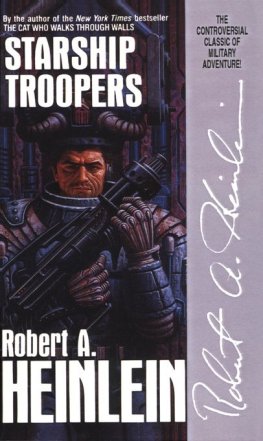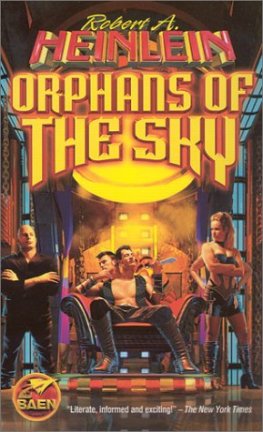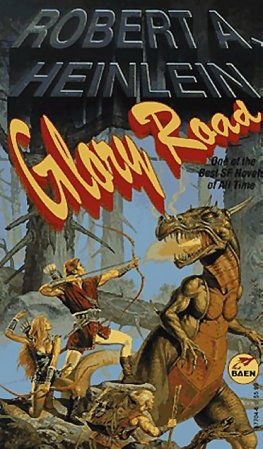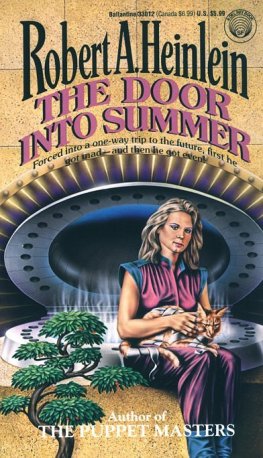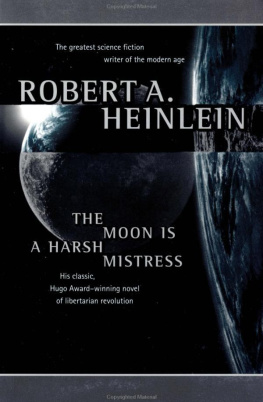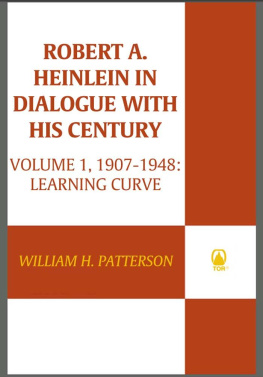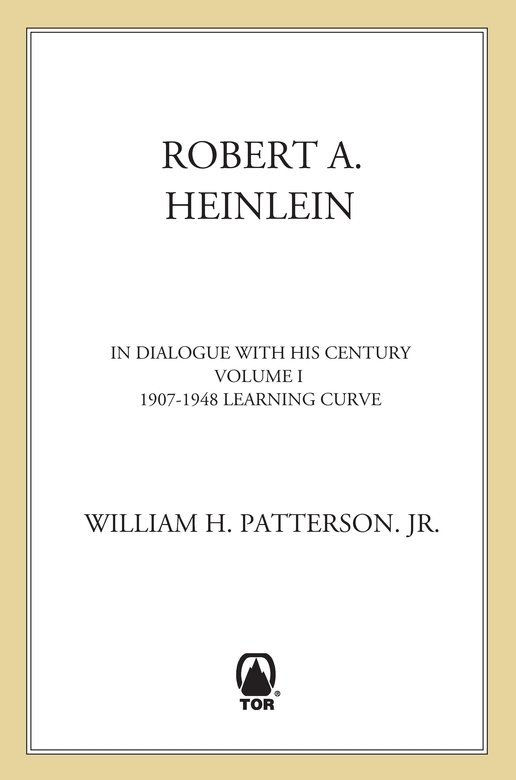When Virginia Heinlein called on January 1, 2000, to ask me to write a formal biography of her husband, neither of us had quite the vision of the gargantuan thing it was to become.
What I did not know was that Mrs. Heinlein had been searching for a biographer for more than a decade. She had even tried her own hand at writing it but did not feel equal to the task. Brad Linaweaver, the mutual friend who introduced us, later told me that he knew before anyonebefore Ginny, eventhat I was the biographer she had been searching for. Brad has supported this biography above-and-beyond for all the years it has taken to get it into print: Brad Linaweaver is truly the grandfather of this biography.
It is more than a conventional grace note to say that this biography would literally not have been possible without the full support and cooperation of Virginia Heinlein. She opened doors, made rough places plain, introduced me to friends and familyto Eleanor Wood, literary agent extraordinaire, and to Rita Bottoms, Head of Special Collections and Archives of the University Library at the University of California, Santa Cruz. Mrs. Bottomss help with the Robert A. Heinlein Archive, then mostly sealed, in the months before she retired was generousand as nothing to the help she has given in the years since.
Some of Ginnys introductions came too late: all of Heinleins contemporaries would have been in their eighties and nineties; almost all were already gone. An interview Ginny arranged with Admiral Ignatius Pete Gallantin, Retired (U.S. Naval Academy, Class of 1933), provided information and insight about the Naval Academy during Heinleins tenure there. Admiral Gallantin did not live to see the end results of his help.
Other introductions were fruitful and multiplied from generation to generation: an e-mail exchange with Kathy Petty, one of Heinleins grandnieces, was the first of many discussions with other surviving family members, andparticularly the genealogists and family historians of that generation, Andrew Lermer, Jr., and William Ivar Bacchus. It was through Bill Bacchuss good offices that I was privileged to interview Dorothy Martin Heinlein (Robert Heinleins sister-in-law), then aged ninety-two. Sitting around the table with many of the generation of Heinleins nieces and nephews in 2007 at the Centennial celebration of Heinleins birth was a wonderful experienceand this roomful of bright, quick, wry, and witty Heinleins gave me a faint taste of what young Robert Heinleins family dinners must have been like.
But the biography benefited, as well, from the myriad inputs of an interested Heinlein community. Individuals shared anecdotes, tape recordings, and historical research to illuminate the subject. As well as sound advice on the writing, Philippe Paine provided special expertise as an historical researcher, digging through crumbling, seventy-five-year-old rental records in Kansas City to uncover the traces left by Elinor Curry Heinlein. Thanks are owed, as well, to Debra Houdek and Geo Rule, Missouri and Civil War historians, who independently researched Robert Heinleins first wife but chose not to exercise their right to publish first so that the biography could have the privilege instead. Such forbearance is not humanly credible. I suspect angelic intervention.
Dr. Robert James, friend and invaluable critic, reviewed the manuscript at various stages. Special thanks are due, also, to James D. Gifford, who is in a sense the founder of the new generation of the Heinlein community. Jim Gifford was characteristically generous to this newcomer, sharing research materials he had developed over decades. His groundbreaking Robert A. Heinlein: A Readers Companion laid the foundation and plan of a broad city, of which this book is but one ornament. He also, along with Peter Scott and Tim Kyger, took on most of the burden of the 2007 Heinlein Centennial celebration, which allowed the editorial revision of this book to proceed apace. Tim Kyger, longtime friend and space and aerospace professional lobbyist, also monitored the narrative of the aerospace history in which Heinlein was involved.
The late Dr. Phillip Homer Owenby shared his extensive 1994 taped interviews with Mrs. Heinlein to supplement those I made in 20002002. The late Leon Stover, Ph.D., Litt.D, allowed me to read and take extensive notes of his unpublished biography of Robert Heinlein, Before the Writing Began, as well as to assist slightly in readying it for submissionan act of particular generosity. For recovery and access to records, thanks are due to L. N. Collier, Esq.; Bill Higgins and Bill Mullins; Charles W. Miller, Ph.D.; and Beth Simmons as well as four generations of the Mosch family of professional miners in Colorado, whose records exceed those of the state.
The assistance of literally hundreds of individuals is gratefully appreciated, even though I cannot name all of them here. Any errors or infelicities, however, are my own and no reflection on their generosity.
Thanks also are due to my editor, David Hartwell. No better-prepared editor could have been found anywhere in the field.
And, last if not in any way least, to the Trustees of the Heinlein Prize Trust, Arthur M. Dula, J. Buckner Hightower, and James Miller Vaughn, Jr., whose continuing support of this project has been outstanding and indispensable.
WILLIAM H. PATTERSON, JR.
FAMILY BACKGROUND
Robert Heinlein was, like a great many of his relatives, interested in his family history both in America and in Europe before his great-great-great-grandfather immigrated here before the Revolutionary War. He was, furthermore, proud of the family tradition that Heinleins had fought in every American war. Kept out of combat in World War II himself, he supported his many friends in the armed forcesKiller Cal Laning, John Arwine, Isaac Asimov, Jack Williamson, and L. Ron Hubbardand he was awed and inspired by his brothers parts in the conflict: Lawrence Lyle Heinlein, who rose through the ranks from private to major general, was one of the handful of Americans who made up the Japanese occupation forces for a few weeks in August and September 1945. Jay Clare was in the first small force occupying Korea. It was their proud tradition as well as his own.
When he was able to travel in Europe, Heinlein made a point of finding out about the Heinlein and Lyle ancestors in Germany and in Ireland, and of sharing his findings with the other members of the Heinlein Family Association. Interest in Heinlein and Lyle family genealogy continues unabated in the next generation, and the special assistance of two of Heinleins nephews knowledgeable in family lore, William Ivar Bacchus and Andrew Lermer, Jr., in putting together this appendix is acknowledged with gratitude.
The name Heinlein was originallymeaning before the family came to Americaa moderately common Bavarian Catholic name. Even though the Heinleins have a lively interest in their family genealogy, the ground is confused because of multiple immigrations to the United States, at different times, deriving from different branches of the same family and from entirely different families. There were apparently two Heinlein families that came to the United States at about the same time in the mid-eighteenth century, bothcoming through Philadelphia and settling first in Bucks County, Pennsylvania. While this is a curious coincidence, it is not particularly startling: William Penn had traveled extensively in the Low Countries and the Rhineland to promote his proprietorship in the New World, and any converts deriving from Penns proselytizing would naturally come through Philadelphia and make their way to the area being settled at the time.




